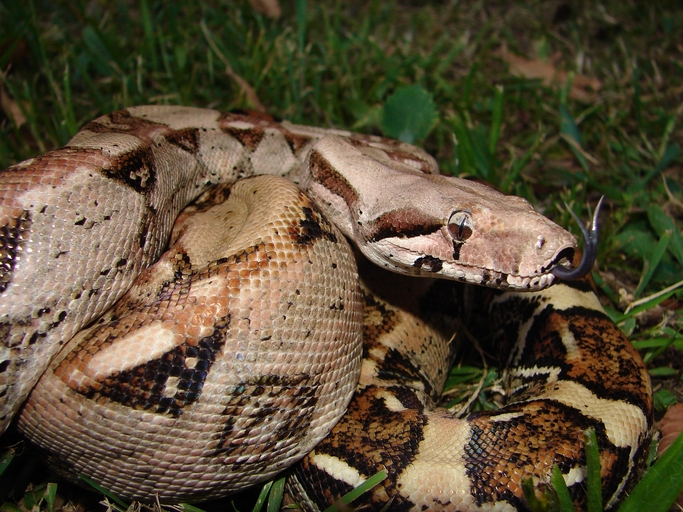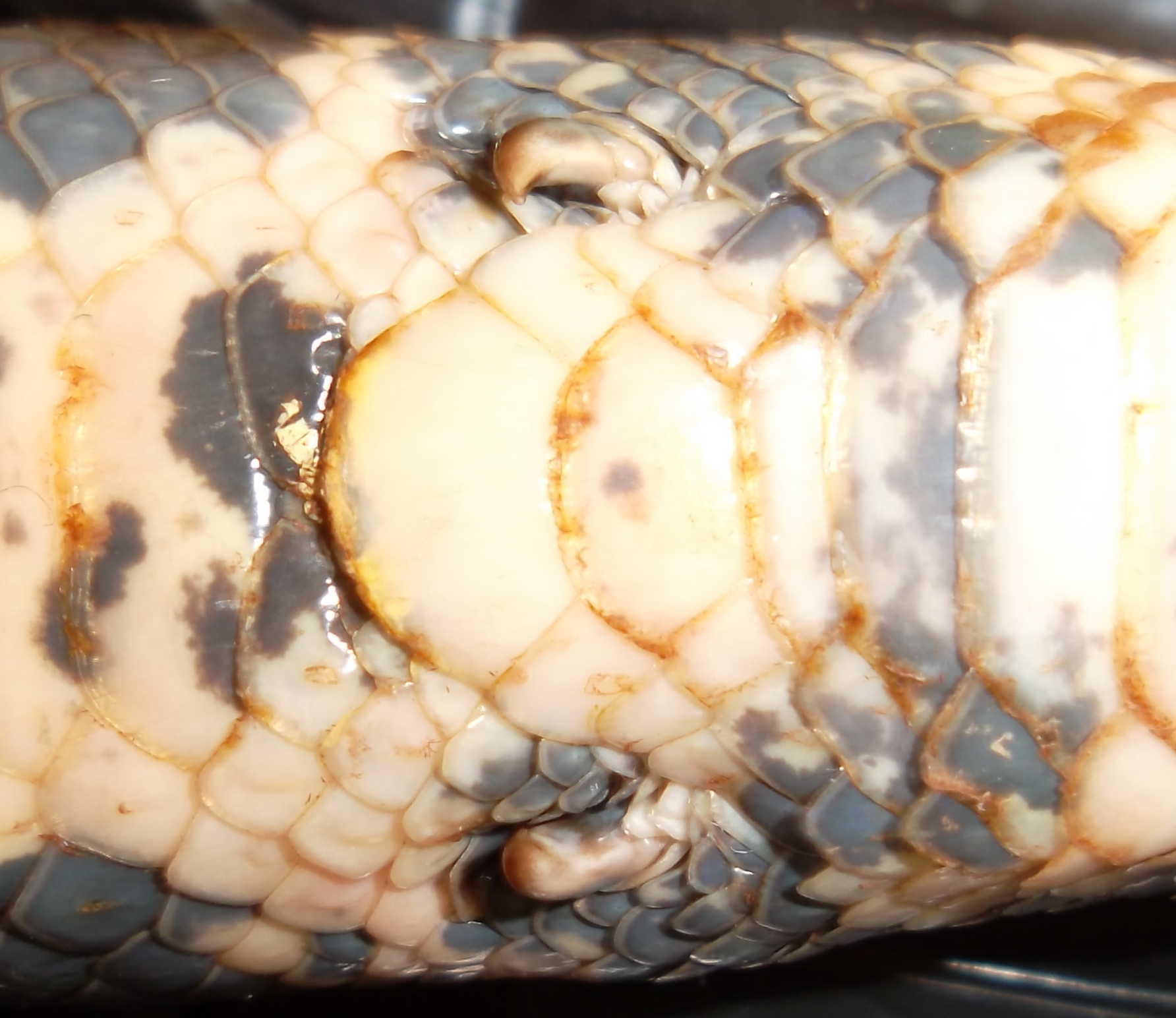|
Boa (genus)
''Boa'' is a genus of Boinae, boas found in Mexico, the Caribbean, and Central America, Central and South America. Five extant species, and one extinct, are currently recognized. Etymology The Online Etymology Dictionary says that the word comes from the "late 14c., "large snake," from Latin boa, type of large serpent mentioned in Pliny the Elder, Pliny's Naturalis Historia, "Natural History;" origin unknown (in medieval folk etymology the name was associated with Greek bous "ox")." There might be a connection to the Albanian word bolla, bollë, from proto-Albanian *bālwā, meaning any of various nonvenomous snakes of the families Colubridae, Colubridae family, Boidae, Boidae family or a kuçedër's early form. Price, Glanville (2000). Encyclopedia of the Languages of Europe. Wiley-Blackwell; 1 edition Species *) Not including the nominate subspecies. Distribution and habitat ''Boa'' species are found in northern Mexico through Central America (Belize, Guatemala, Honduras, ... [...More Info...] [...Related Items...] OR: [Wikipedia] [Google] [Baidu] |
Paleogene
The Paleogene Period ( ; also spelled Palaeogene or Palæogene) is a geologic period and system that spans 43 million years from the end of the Cretaceous Period Ma (million years ago) to the beginning of the Neogene Period Ma. It is the first period of the Cenozoic Era, the tenth period of the Phanerozoic and is divided into the Paleocene, Eocene, and Oligocene epochs. The earlier term Tertiary Period was used to define the time now covered by the Paleogene Period and subsequent Neogene Period; despite no longer being recognized as a formal stratigraphic term, "Tertiary" still sometimes remains in informal use. Paleogene is often abbreviated "Pg", although the United States Geological Survey uses the abbreviation "" for the Paleogene on the Survey's geologic maps. Much of the world's modern vertebrate diversity originated in a rapid surge of diversification in the early Paleogene, as survivors of the Cretaceous–Paleogene extinction event took advantage of empty ecolo ... [...More Info...] [...Related Items...] OR: [Wikipedia] [Google] [Baidu] |
Online Etymology Dictionary
Etymonline, or ''Online Etymology Dictionary'', sometimes abbreviated as OED (not to be confused with the ''Oxford English Dictionary'', which the site often cites), is a free online dictionary that describes the etymology, origins of English language, English words, written and compiled by Douglas R. Harper. Description Douglas R. Harper is an American Civil War historian and copy editor for LNP Media Group. He compiled the etymology dictionary to record the history and evolution of more than 50,000 words, including slang and technical terms. The core of its etymology information stems from ''The Barnhart Dictionary of Etymology'' by Robert Barnhart, Ernest Klein's ''Comprehensive Etymology Dictionary of the English Language'', ''The Middle English Compendium'', ''The Oxford English Dictionary'', and the 1889–1902 ''Century Dictionary''. Harper also researches on digital archives. On the ''Etymonline'' homepage, Harper says that he considers himself "essentially and for the m ... [...More Info...] [...Related Items...] OR: [Wikipedia] [Google] [Baidu] |
Boa Orophias
''Boa orophias'', the Saint Lucia boa or San Lucia boa, is a species of snake in the family Boidae. The species is endemic to Saint Lucia. ''Boa orophias'' was described as a full species by Carl Linnaeus in 1758, but many later authors have classified it as a subspecies of ''Boa constrictor''. According to the IUCN Red List, ''Boa orophias'' is a species, which they have listed as Endangered An endangered species is a species that is very likely to become extinct in the near future, either worldwide or in a particular political jurisdiction. Endangered species may be at risk due to factors such as habitat loss, poaching, inv .... References orophias Reptiles of Saint Lucia Reptiles described in 1758 Taxa named by Carl Linnaeus {{snake-stub ... [...More Info...] [...Related Items...] OR: [Wikipedia] [Google] [Baidu] |
Boa Orophias 60466703
Boa, BoA, or BOA may refer to: Snakes * Any member of the Boidae, a family of medium to large, non-venomous, constricting snakes ** Any member of the Boinae, a subfamily of boid snakes *** Any member of ''Boa'' (genus), a group of boid snakes * Any member of the Bolyeriidae, a.k.a. Round Island boas, a small family of non-venomous snakes from Mauritius and nearby islands * Any member of the Tropidophiidae, a.k.a. dwarf boas, a family of non-venomous snakes found in Central America, South * A common name for ''Boa constrictor'' Organisations * Bank of America, a large American banking and financial services company * Bank of Africa, a multinational bank * Boliviana de Aviación (BoA), a Bolivian state airline * Boun Oum Airways, a defunct Laotian Airline * British Octopush Association, which is the controlling body for underwater hockey in the United Kingdom * British Olympic Association, which oversees Britain's participation in the Olympic Games * British Optical Association ... [...More Info...] [...Related Items...] OR: [Wikipedia] [Google] [Baidu] |
Dominica
Dominica, officially the Commonwealth of Dominica, is an island country in the Caribbean. It is part of the Windward Islands chain in the Lesser Antilles archipelago in the Caribbean Sea. The capital, Roseau, is located on the western side of the island. Dominica's closest neighbours are two Special member state territories and the European Union, constituent territories of the European Union, both overseas departments of France: Guadeloupe to the northwest and Martinique to the south-southeast. Dominica comprises a land area of , and the highest point is Morne Diablotins, at in elevation. The population was 71,293 at the 2011 census. The island was settled by the Arawak arriving from South America in the fifth century. The Kalinago displaced the Arawak by the 15th century. Christopher Columbus is said to have passed the island on Sunday, 3 November 1493. It was later colonised by Europeans, predominantly by the French from the 1690s to 1763. The French trafficked slaves from W ... [...More Info...] [...Related Items...] OR: [Wikipedia] [Google] [Baidu] |
Boa Nebulosa
''Boa nebulosa'', the Dominican boa, is a species of snake in the family Boidae. The species is endemic to Dominica Dominica, officially the Commonwealth of Dominica, is an island country in the Caribbean. It is part of the Windward Islands chain in the Lesser Antilles archipelago in the Caribbean Sea. The capital, Roseau, is located on the western side of t .... References External links iNaturalist page nebulosa Reptiles of Dominica Reptiles described in 1964 Endemic fauna of Dominica {{Alethinophidia-stub ... [...More Info...] [...Related Items...] OR: [Wikipedia] [Google] [Baidu] |
Boa Constrictor Imperator
''Boa imperator'' (or ''Boa constrictor imperator'' in common usage) is a large and heavy-bodied arboreal species of nonvenomous, constrictor-type snake in the family Boidae. One of the most popular pet snakes (often bred in captivity) in the world, ''B. imperator'''s native range is from Mexico through Central and South America (west of the Andes Mountains, mainly in Colombia), with local populations on several small Caribbean islands. It is commonly called the Central American boa, northern boa, Colombian boa (or Colombian red-tailed boa), common boa and common northern boa. Description ''Boa imperator'' is a wide-ranging species, living in both Central America and the northern parts of South America. As a result, the appearance of this snake varies greatly depending on the specific locality. As one of the smaller ''Boa'' species, [...More Info...] [...Related Items...] OR: [Wikipedia] [Google] [Baidu] |
Parque Nacional Da Serra Da Capivara Manugirard (01)
*
*
{{dab, surname ...
Parque is the Galician, Portuguese and Spanish word for "park", and may refer to: * Parque (TransMilenio), a metro station in Bogotá, Colombia * Parque (Lisbon Metro), in Portugal * Parque (Santurce), a subbarrio in San Juan, Puerto Rico * Battle of Parque (1912), in Morelos, Mexico * Jim Parque (born 1975), American baseball player See also * Parquetry, a type of flooring * Park (other) A park is an area of land with a recreational or other specific purpose. Park or Parks may also refer to: Places United Kingdom * Park (Barnet ward), London, England * Park (Greenwich ward), London, England * Park (Haringey ward), London, Eng ... [...More Info...] [...Related Items...] OR: [Wikipedia] [Google] [Baidu] |
Kuçedër
The kulshedra or kuçedra is a water, storm, fire and chthonic demon in Albanian mythology and folklore, usually described as a huge multi-headed female serpentine dragon. She is the archetype of darkness and evil, the complementary and opposing force to drangue, the archetype of light and good. The kulshedra is believed to spit fire, cause drought, storms, flooding, earthquakes and other natural disasters against mankind. In Albanian mythology she is usually fought and defeated by a drangue, who is a semi-human winged divine hero and protector of mankind, the most widespread Albanian culture hero. Heavy thunderstorms are thought to be the result of most of their battles. Others include earthquakes, volcanic eruptions and cyclones. In Albanian traditions kulshedra is also fought and defeated by other celestial heroes and heroines, like the Daughter of the Moon and the Sun ( E Bija e Hënës dhe e Diellit) who tries to protect her loved one by using her light powers, or other he ... [...More Info...] [...Related Items...] OR: [Wikipedia] [Google] [Baidu] |
Boidae
The Boidae, commonly known as boas or boids, are a family of nonvenomous snakes primarily found in the Americas, as well as Africa, Europe, Asia, and some Pacific islands. Boas include some of the world's largest snakes, with the green anaconda of South America being the heaviest and second-longest snake known; in general, adults are medium to large in size, with females usually larger than the males. Six subfamilies comprising 14-15 genera and 54-67 species are currently recognized. Description Like the pythons, boas have elongated supratemporal bones. The quadrate bones are also elongated, but not as much, while both are capable of moving freely so when they swing sideways to their maximum extent, the distance between the hinges of the lower jaw is greatly increased.Parker, H.W.; Grandison, A.G.C. 1977. ''Snakes – A Natural History''. Second Edition. British Museum (Natural History) and Cornell University Press. 108 pp. 16 plates. LCCCN 76-54625. (cloth), (paper). Bo ... [...More Info...] [...Related Items...] OR: [Wikipedia] [Google] [Baidu] |
Colubridae
Colubridae (, commonly known as colubrids , from , 'snake') is a family of snakes. With 249 genera, it is the largest snake family. The earliest fossil species of the family date back to the Late Eocene epoch, with earlier origins suspected. Colubrid snakes are found on every continent except Antarctica. Description Colubrids are a very diverse group of snakes. They can exhibit many different body styles, body sizes, colors, and patterns. They can also live in many different types of habitats including aquatic, terrestrial, semi-arboreal, arboreal, desert, mountainous forests, semi-fossorial, and brackish waters. A primarily shy and harmless group of snakes, the vast majority of colubrids are not venomous, nor do most colubrids produce venom that is medically significant to mammals. However, the bites of some can escalate quickly to emergency situations. Furthermore, within the Colubridae, the South African boomslang and twig snakes, as well as the Asian keelback snakes (' ... [...More Info...] [...Related Items...] OR: [Wikipedia] [Google] [Baidu] |


